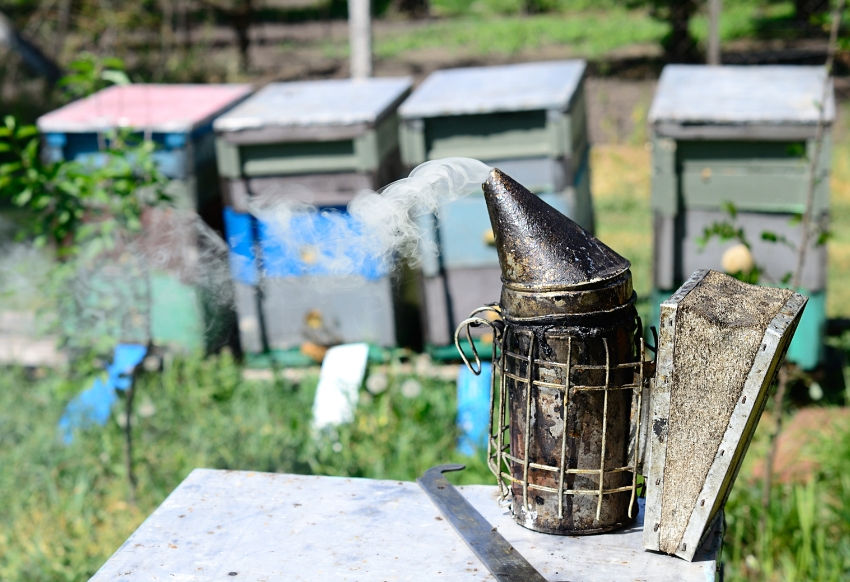Can I Feed My Bees Too Much?
- Laurence Edwards

- Nov 21, 2024
- 4 min read
Can I Feed Bees Too Much? The Dangers of Overfeeding Your Hives
As a beekeeper, one of the most pressing questions you may face is, "Can I feed my bees too much?" The short answer is yes, it’s entirely possible to overfeed your bees, and doing so can have unintended consequences that harm your hives. Especially as you prepare your bees for winter, understanding the risks of overfeeding is critical.
In this article, we'll explore the dangers of overfeeding bees, discuss its impact on colony health, and provide actionable tips to strike the right balance when feeding. Whether you’re a seasoned beekeeper or just starting, this guide will help you keep your hives healthy and thriving.

Why Feeding Bees Is Important
Feeding your bees is crucial during nectar dearth or in preparation for winter. Bees rely on carbohydrates (nectar or sugar syrup) and proteins (pollen) to sustain their activities, support brood rearing and store food for survival during colder months. However, supplementing their diet interferes with their natural foraging instincts and overfeeding can disrupt the hive's balance and lead to issues that may threaten the colony’s well-being.

The Dangers of Overfeeding Bees
1. Restricted Brood Production: Overfeeding can reduce brood production by overcrowding the hive with stored food. When combs are packed with nectar or sugar syrup, the queen may limit egg-laying due to a lack of space. This is especially dangerous heading into winter when the colony needs a robust population of winter bees to survive and make it through until the following Spring.
2. Reduced Foraging Activity: When bees have an abundance of stored food, they may stop foraging, which in turn can impact on brood production. This disrupts their natural behaviour and limits their collection of vital resources like pollen, which is essential for brood development. Reduced foraging also affects the surrounding ecosystem by limiting pollination.
3. Increased Risk of Disease and Pests: Overfeeding can create an environment ripe for disease and pests. The process of feed attracts robbing bees and pests like wasps, leading to potential hive invasions, which weakens your colony. Weak sugar syrup fed towards the end of winter can also cause issues with mould and fungus in the hive over the colder winter period.
4. Poor Winter Survival Rates: Overfeeding impacts the development of winter bees, which are critical for colony survival during the cold months. Colonies burdened with excessive stores may struggle to manage resources efficiently, leading to higher mortality rates and weaker hives in spring.

How to Feed Bees Without Overfeeding
To avoid the dangers of overfeeding, follow these best practices:
1. Use Trickle Feeding
Instead of providing large quantities of syrup all at once, opt for trickle feeding in the late summer and early Autumn (Aug-Sept in UK). Small, consistent amounts of 1:1 sugar syrup to be fed at regular intervals IF and only IF the bees need it. It's still warm enough to inspect at this point in the year to look at the frames and see what the bees need. This allows bees to consume and store the syrup gradually, but with early 1:1 syrup they will tend to consume the syrup and use the energy to promote brood rearing of winter bees. This is a good thing and ensures strong colonies of bees going into winter.
Benefits of trickle feeding:
Supports steady brood production by providing a manageable supply of resources.
Encourages bees to continue foraging for nectar and pollen.
Prevents the hive from becoming overcrowded with excess stores.

2. Monitor Hive Weight and Stores
Regularly check your hive’s weight and stored food levels using a hive scale or by lifting the hive. A heavy hive may indicate excessive food stores, while a light hive may need additional feeding. In Aug/Sep don't be afraid to go in and have a look if you need to see what is actually going on in the hives but be QUICK as hive inspections at this time of year can start robbing behaviour.
If you notice excessive stores:
Remove surplus frames of food.
Reduce feeding frequency or syrup volume.
3. Time Feeding Strategically
Begin heavy supplemental feeding with 2:1 syrup in early Autumn (late Sept/early Oct in UK) as nectar flows decline. Avoid starting too early, which can lead to overcrowding and reduced brood production. If natural nectar sources like ivy blooms become available, reduce or pause feeding to encourage bees to forage naturally. Provide a final heavy feeding in late Autumn with 2:1 syrup only if stores remain insufficient for winter survival. We do a final heavy feed around the mid/end of October in the UK.

4. Adjust Feeding to Colony Needs
Every colony is unique, so observe their behaviour and adjust feeding accordingly. Look for:
The size and condition of the brood nest.
The ratio of stored food to empty comb.
Foraging activity and pollen collection.
By tailoring your feeding strategy, you can ensure your bees receive just enough support without overfeeding.

Final Thoughts: Can I Feed My Bees Too Much?
Yes, you can overfeed your bees, but with careful monitoring and thoughtful feeding strategies, you can avoid this common pitfall. The goal is to supplement your bees’ natural instincts, not replace them. By striking the right balance, you’ll set your colonies up for success, ensuring healthy, productive hives year-round.














Comments